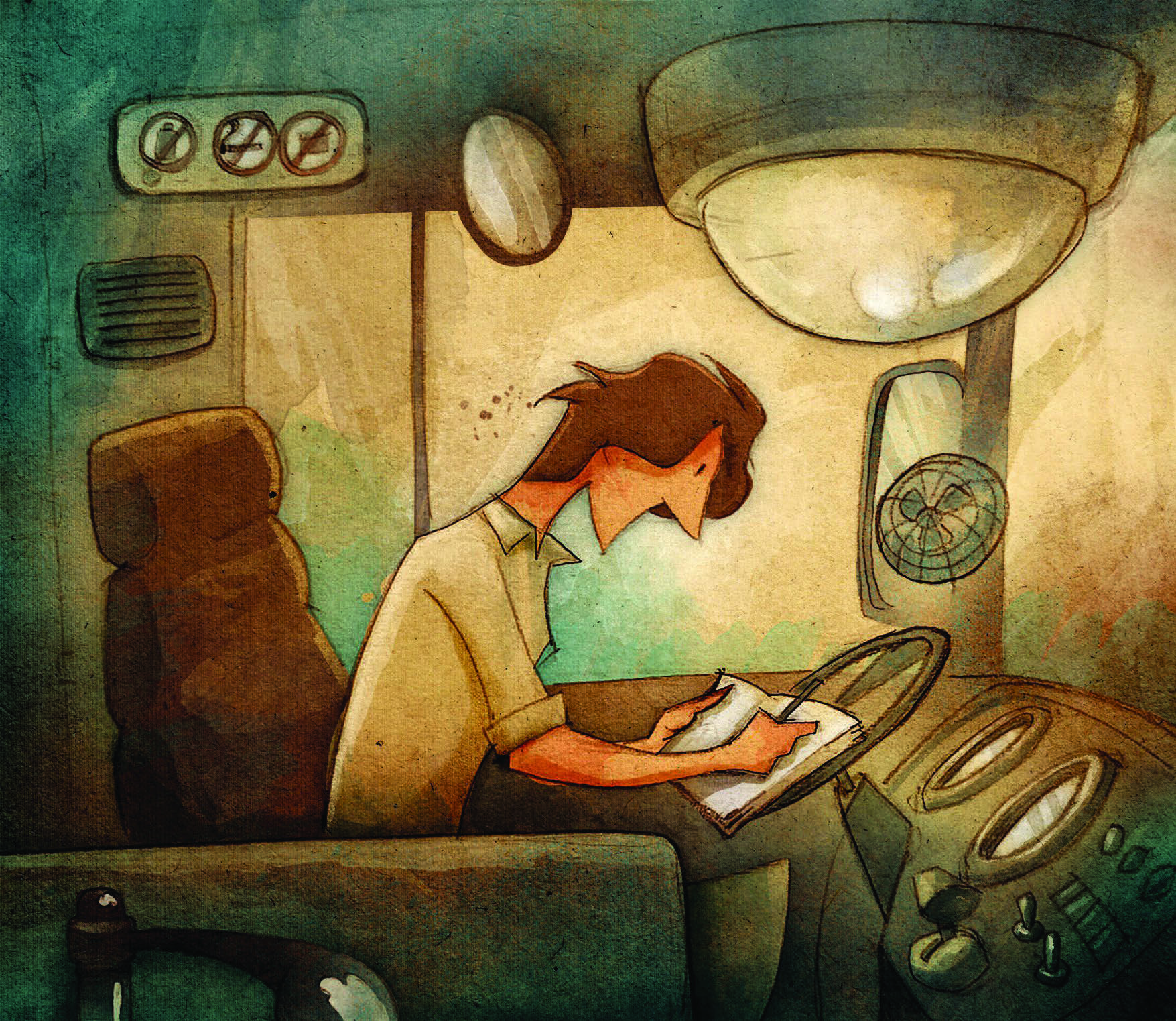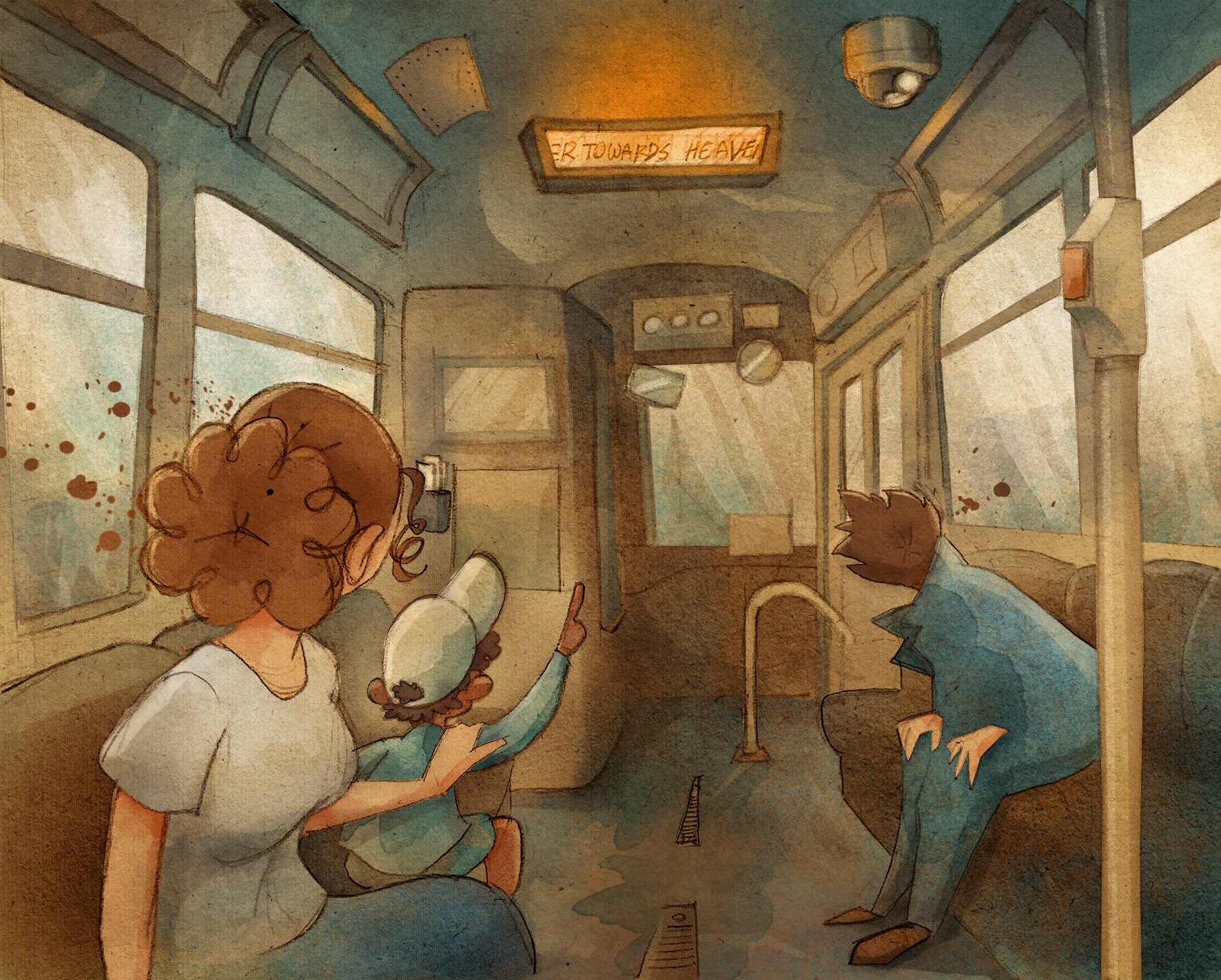Work Fictions: On Poetry Buses and the Design of Sociotechnical Futures
Paris Selinas, Interaction Designer and PhD Candidate
In the post-2008 era of economic stagnation, precarious jobs and increasing inequality, work has become a matter of concern, giving rise to the discourse known as “the future of work”. One potential way forward comes from corporations and entrepreneurs. Their narrative is built on the idea of technological inevitability and, while it does not challenge formalistic notions of work as the commodification of human activity, it promises that automation will massively reduce the need for humans to perform it.
We are told, for example, that autonomous vehicles are coming to replace drivers, including those who do so for a living. This transforms car companies from carmakers to providers of digital and physical infrastructure and services. Sedric (from “self-driving car”), for example, is an autonomous concept vehicle by Volkswagen that promises an individualized mobility experience, with multiple entertainment screens and innovative human-machine interactions.
These promises are articulated by material representations of future situations through a combination of 3D renderings, motion graphics, and image manipulation. The aim of these representations is to naturalise future technologies by contextualising them into social realities and scenarios of use. In doing so, they shape our expectations about the future, which in turn shapes research agendas, channels funding, and grounds discussions amongst diverse stakeholders (Borup et al 2006).
Future autonomous car vision. Image by Metamorworks
Despite claims about novelty and imagination, these concepts tap on currently hyped technologies such as sensors, data and machine learning to create, as Marvin puts it, a “fancier version of the present” (Marvin 1988). In order to enact desirability for these futures, the efficacy of the technology is inflated, while our everyday frictions with it are downplayed. A similar rationale applies to work. For the creators of these visions, the practices, tensions, and histories of professional drivers have little to say about the future of mobility. Instead, the lived experiences of work are discontinued and people are presented as idealised users. In the future of autonomous vehicles, the concept of autonomy itself is deprived of its emancipatory dimension to signify cars that are instructed to go from place A to place B, and former drivers who are turned into consumers of digital content and advertising.
My recently commenced research in the department of Management is concerned with weaving back together the social and the technological in forward-oriented fictions of work, in order to open up new directions that can be critically and collectively explored. But in order to do that, it does not start with data or future cars.
It starts with a bus driver.
Paterson (Jim Jarmusch 2016) is a movie without a plot, for a life without a plot. The film shows a week in the life of Paterson (played by Adam Driver), a bus driver in the city of Paterson, New Jersey. But Paterson is not what we might consider as a typical bus driver. Whilst driving he observes his surroundings and overhears conversations in the bus and turns them into poetry.
Paterson never intends to publish his poems though, leaving him neither a professional poet nor a typical driver. In fact, he is more of a traveller, seeking beauty in the mundanity of the everyday. A little girl who also writes poetry remarks, with surprise: “A bus driver that likes Emily Dickinson!”. The ambiguity in Paterson’s activity challenges our expectations of what a bus driver is and does, and by that, opens up new possibilities for the design of technologies of work.
In the film, Paterson doesn’t commodity his poems by publishing them. But at the end of the movie, his notebook and the poems in it are lost. Inspired by that, I created the “Autonomous Poetry Bus”, a scenario in which an autonomous bus works in collaboration with Paterson, instead of replacing him. In this scenario, the bus uses its CCTV system to take snapshots of his notebook. Then, through image-to-text conversion, the bus extracts the poems and projects them on the screen that displays announcements in the intervals between stops. Once the poems have been played back, the data is deleted and the poems are lost, living only in the memory of Paterson and the passengers who read them. This connects the passengers not only to the driver and the bus, but to the previous passengers who inspired the poems as well, forming what Ezio Manzini calls a “light community”: A series of meaningful encounters between unknowns that happen within and are enabled by a sociotechnical ecosystem (Manzini 2019).
The autonomous poetry bus uses its cameras to capture the poems from Paterson’s notebook. Pencils by Paris Selinas, colours by Louiza Karageorgiou.
The bus then projects the poems to the passengers via its screens. Pencils by Paris Selinas, colours by Louiza Karageorgiou.
The interior of the autonomous poetry bus. The screen plays back a part of Paterson’s Love Poem (originally written by Ron Padgett). Video editing by Paris Selinas.
Paterson’s is a specific — and fictional — case, but one with wider significance. Much of the “future of work” discourse revolves around the removal of constraints, either the constraints that humans pose on productivity, or the ones that waged labour poses on meaningful activity. Paterson’s poetry, however, is inextricably linked to driving the bus, and the material conditions and constraints in which this happens. The low speed limit, for example, is something that constrains productivity, enabling him to observe the city and overhear conversations. Poetry emerges as a result of Paterson’s deep, embodied understanding of the world that surrounds him. The film asks us to move beyond the mere acceptance or negation of constraints, and critically interrogate their relationship with our work and subjectivities.
The Autonomous Poetry Bus is a “design fiction”, a collection of storytelling materials that opens up a discursive space to explore. By juxtaposing elements of the imaginary and the mundane, the story challenges normative ideas and suggest new ways of conceptualizing work (bus driver/poet), infrastructure (the bus, CCTV), and automation (collaborative and affective instead of competitive and effective). Taking a step back from techno-driven visions to consider the stories and practices of working people can open up new paths for the reciprocal transformation of work and automation.
References
Borup, Mads, Nik Brown, Kornelia Konrad, and Harro Van Lente. "The sociology of expectations in science and technology." Technology analysis & strategic management 18, no. 3-4 (2006): 285-298.
Manzini, Ezio. Politics of the Everyday. Bloomsbury Visual Arts, 2019, pp. 29–35.
Marvin, Carolyn. When old technologies were new: Thinking about electric communication in the late nineteenth century. Oxford University Press, USA, 1988.
Acknowledgments
I would like to thank Dr. Harry Pitts, Prof. Richard Owen and Prof. Suzan Halfrod for their inputs in this article. Many thanks to the artist Louiza Karageorgiou, who, like Paterson, took ownership of my pencil drawings to turned them into something greater.
My PhD is funded by the Department of Management, University of Bristol.
Get in touch if you are interested in collaborating on the Autonomous Poetry Bus or other work fictions.


